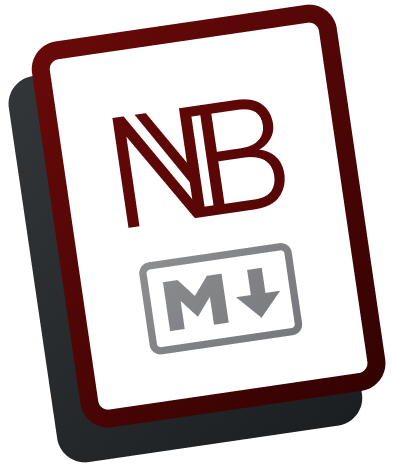PWA
Manifests
The manifest is a way to tell a webpage how to behave as a PWA. This is linked in the HTML head tag like <link rel="manifest" href="/site.webmanifest"/>.
Here is an example of the site.webmanifest file for Scoresheet, and assets can be found on Figma:
{
"name": "Scoresheet",
"theme_color": "#350808",
"background_color": "#ffffff",
"display": "standalone",
"start_url": "/",
"scope": "/",
"icons": [
{
"note": "This is used for the chrome://apps page, but needs additional padding.",
"src": "/web-app-manifest-192x192-maskable.png",
"sizes": "192x192",
"type": "image/png",
"purpose": "maskable"
},
{
"note": "This is used for the mac toolbar icon, but needs additional padding.",
"src": "/web-app-manifest-512x512-maskable.png",
"sizes": "512x512",
"type": "image/png",
"purpose": "maskable"
},
{
"note": "This is used for creating a PWA on chrome as a preview.",
"src": "/web-app-manifest-512x512.png",
"sizes": "512x512",
"type": "image/png"
}
],
"screenshots": [
{
"src": "/img/screenshots/screenshot-1280-720-1.jpg",
"sizes": "1280x720",
"type": "image/jpg",
"form_factor": "wide",
"label": "Initialize a game by adding players."
},
{
"src": "/img/screenshots/screenshot-1280-720-2.jpg",
"sizes": "1280x720",
"type": "image/jpg",
"form_factor": "wide",
"label": "Add scores for each round."
},
{
"src": "/img/screenshots/screenshot-1280-720-3.jpg",
"sizes": "1280x720",
"type": "image/jpg",
"form_factor": "wide",
"label": "During a game, view the current standings in a table format."
},
{
"src": "/img/screenshots/screenshot-1280-720-4.jpg",
"sizes": "1280x720",
"type": "image/jpg",
"form_factor": "wide",
"label": "During a game, view the current standings in a chart format."
},
{
"src": "/img/screenshots/screenshot-1280-720-5.jpg",
"sizes": "1280x720",
"type": "image/jpg",
"form_factor": "wide",
"label": "Ending a game displays a podium view."
},
{
"src": "/img/screenshots/screenshot-375-812-1.jpg",
"sizes": "375x812",
"type": "image/jpg",
"form_factor": "narrow",
"label": "Initialize a game by adding players."
},
{
"src": "/img/screenshots/screenshot-375-812-2.jpg",
"sizes": "375x812",
"type": "image/jpg",
"form_factor": "narrow",
"label": "Add scores for each round."
},
{
"src": "/img/screenshots/screenshot-375-812-3.jpg",
"sizes": "375x812",
"type": "image/jpg",
"form_factor": "narrow",
"label": "During a game, view the current standings in a table format."
},
{
"src": "/img/screenshots/screenshot-375-812-4.jpg",
"sizes": "375x812",
"type": "image/jpg",
"form_factor": "narrow",
"label": "During a game, view the current standings in a chart format."
},
{
"src": "/img/screenshots/screenshot-375-812-5.jpg",
"sizes": "375x812",
"type": "image/jpg",
"form_factor": "narrow",
"label": "Ending a game displays a podium view."
}
]
}Icons
Icons need to be specifically designed for the purpose in the manifest. A maskable image needs additional padding to allow the OS to fit it to their constraint. MacOS will use the maskable image to make it the rounded square icon on the toolbar, and Chrome will use the maskable image to fit it in the chrome://apps page with the circle icon.
![]()
iOS devices do not use the manifest for icons, that I know of. Instead provide a link to an apple-touch-icon. This image will fit the rounded corner of the icon, but you don't need to add extra padding to the icon.
<link
rel="apple-touch-icon"
sizes="180x180"
href="/apple-touch-icon.png"
/>
<meta
name="apple-mobile-web-app-title"
content="Scoresheet"
/>Service Workers
This is my setup for Scoresheet to get service workers working. It is in the top level of the src/routes directory in a sveltekit app. This should allow the app to work in offline mode, but there were issues on Android.
// Copied directly from the SvelteKit documentation
// https://svelte.dev/docs/kit/service-workers
/// <reference types="@sveltejs/kit" />
import { build, files, version } from '$service-worker';
// Create a unique cache name for this deployment
const CACHE = `cache-${version}`;
const ASSETS = [
...build, // the app itself
...files // everything in `static`
];
self.addEventListener('install', (event) => {
// Create a new cache and add all files to it
async function addFilesToCache() {
const cache = await caches.open(CACHE);
await cache.addAll(ASSETS);
}
event.waitUntil(addFilesToCache());
});
self.addEventListener('activate', (event) => {
// Remove previous cached data from disk
async function deleteOldCaches() {
for (const key of await caches.keys()) {
if (key !== CACHE) await caches.delete(key);
}
}
event.waitUntil(deleteOldCaches());
});
self.addEventListener('fetch', (event) => {
// ignore POST requests etc
if (event.request.method !== 'GET') return;
async function respond() {
const url = new URL(event.request.url);
const cache = await caches.open(CACHE);
// `build`/`files` can always be served from the cache
if (ASSETS.includes(url.pathname)) {
const response = await cache.match(url.pathname);
if (response) {
return response;
}
}
// for everything else, try the network first, but
// fall back to the cache if we're offline
try {
const response = await fetch(event.request);
// if we're offline, fetch can return a value that is not a Response
// instead of throwing - and we can't pass this non-Response to respondWith
if (!(response instanceof Response)) {
throw new Error('invalid response from fetch');
}
if (response.status === 200) {
cache.put(event.request, response.clone());
}
return response;
} catch (err) {
const response = await cache.match(event.request);
if (response) {
return response;
}
// if there's no cache, then just error out
// as there is nothing we can do to respond to this request
throw err;
}
}
event.respondWith(respond());
});